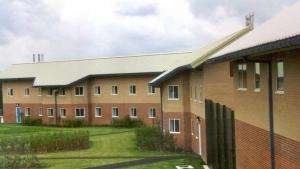Secure schools a penal approach rooted in the past say social workers

Government plans to create ‘secure schools’ represent a return to a 1920s-style penal approach to troubled young people, social workers warn.
The concern comes after revelations that the Ministry of Justice is planning to open the first secure school for young offenders in 2020.
It will be situated on the site of the Medway secure training centre in Kent with a stated aim to “place education and healthcare at the heart of youth custody”.
But two specialist social work groups within the British Association of Social Workers covering criminal justice and children and families expressed their concern at the plan.
They said: “We are opposed to the philosophy underpinning secure schools, regarding it as a return to the thinking of the 1920s which led up to the establishment of the approved schools - a system found to be ineffective and modified in the 1960s.”
Francis Boylan, chair BASW’s criminal justice practice, policy and education group, said outdated thinking behind such institutions risked being repeated.
“Recent detailed studies of children in secure settings have highlighted long term, multi-generational family deprivation, and failures of care, education and mental health services,” he said.
“The notion that these grossly emotionally damaged children will be able access the educational opportunities of the secure schools within the limited time provided by what are essentially short-term incarcerations is difficult to comprehend.
“Irrespective of that, where are to be found educators and therapist capable of establishing the essential relationships with these children necessary to enable them to achieve their goals?”
Boylan added the choice of the Medway site for the first school, with its negative association as a custodial setting, was also troubling along with its design and construction. “Cosmetic” attempts to repackage it as “anything but a prison would be an illusion”, he said.
Social workers also expressed concern at children being removed from their local community to go to secure schools. Those attending the Medway secure school were most likely to come from London, said Boylan. “It is firmly established that proximity to family is a key factor towards a successful post release outcome.”
Boylan also warned the Medway site was far too large to be a therapeutic environment.
Secure schools were recommended in the 2016 Review of the Youth Justice System in England and Wales and adopted by the Government.
The stated aim is to cater for up to 70 places for “detained children” bringing together other essential services, including education, health and therapeutic. They will run as academy trusts - specialist versions of academy schools with private sector sponsors.
Secure schools represent the Government’s response to criticism over a lack of education at young offender institutions highlighted in the 2016 Review of the Youth Justice System in England and Wales.
Fresh concern was recently raised by charity Howard League for Penal Reform at the “disturbing extent” of self-harm in UK young offender institutions.
Figures obtained by Cardiff University show Parc Prison in Bridgend had the highest rate of self-harm with 64 incidents in 2017.
Andrew Neilson, from the charity, said: “These figures illustrate in graphic detail why prison is no place for a child.”
